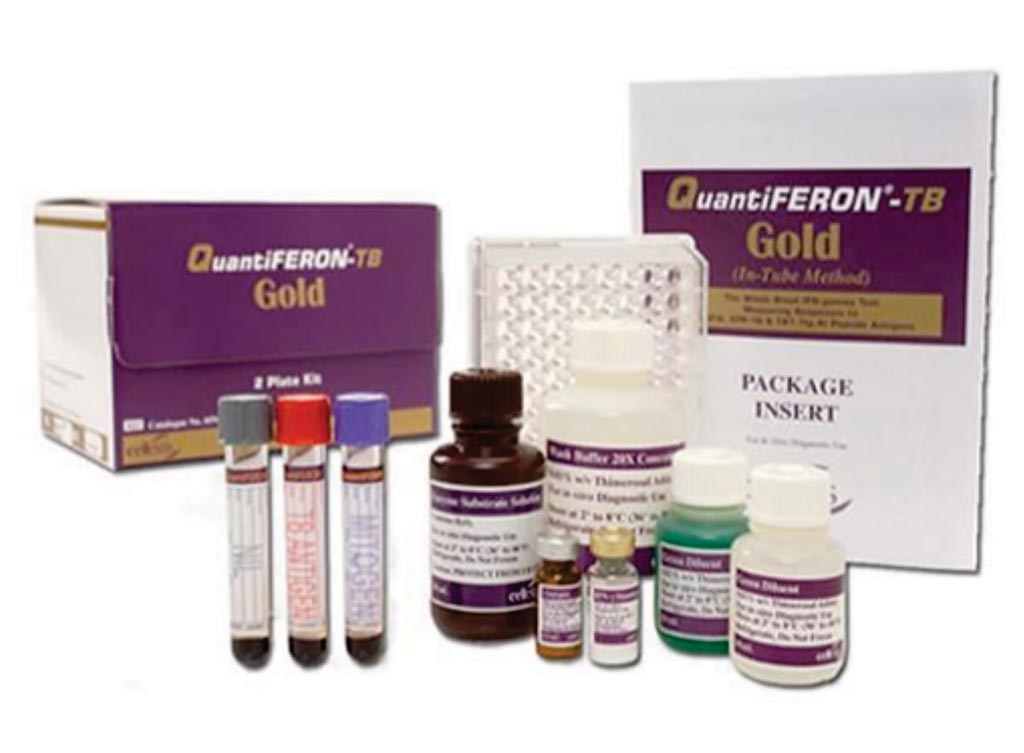Bronchoalveolar Lavage Explored for TB Diagnosis
By LabMedica International staff writers
Posted on 15 May 2019
Tuberculosis (TB) is among the top 10 causes of death worldwide, and the leading cause from a single infectious agent. In 2017, TB caused an estimated 1.3 million deaths among Human Immunodeficiency Virus (HIV)-negative people, and an additional 300,000 deaths among HIV-positive people.Posted on 15 May 2019
Early and prompt diagnosis of pulmonary TB is of paramount importance for the prevention of disease progression, spread to other contacts, and to avoid long-term sequelae. Direct sputum smear microscopy is the most widely used method for diagnosing pulmonary TB and is widely available in many countries. Recent studies have shown that a good-quality microscopy of two consecutive sputum specimens is able to identify the vast majority (95%–98%) of smear-positive TB patients.

Image: QuantiFERON-TB Gold (QFT) is a simple blood test that aids in the detection of Mycobacterium tuberculosis, the bacteria which causes tuberculosis (TB). QFT is an interferon-gamma (IFN-γ) release assay, commonly known as an IGRA, and is a modern alternative to the tuberculin skin test (Photo courtesy of Qiagen).
Medical scientists associated with the Hamad General Hospital (Doha, Qatar) carried out a retrospective study of patients referred for diagnostic bronchoscopy for the suspicion of pulmonary tuberculosis during the period from April 1, 2015, to March 30, 2016, and who had negative sputum/smear and culture for tuberculous bacilli.
Patients with suspected pulmonary TB were required to collect two first morning sputum samples on two separate days for Acid- Fast Bacilli (AFB) smear and Mycobacterium tuberculosis (MTB) culture. The National Reference TB Laboratory performs the following tests routinely on any sample of a suspected TB case: Fluorescence microscopy, Ziehl-Neelsen (ZN) staining technique, polymerase chain reaction (PCR) and MTB culture (both solid and liquid media using BACTEC MGIT 960 media. Bronchoscopy and bronchoalveolar lavage (BAL) was performed samples and submitted for MTB smear/culture and PCR and contain at least 10 mL volume of fluid.
The investigators reported that 109 patients fulfilled the inclusion criteria. Bronchoalveolar lavage detected further 61/190 (32.1%) pulmonary tuberculosis cases. Bronchoalveolar lavage mycobacterial culture and PCR (positive in 60/190 (31.6%) and 58/190 (30.5%) of patients respectively) provided the highest diagnostic yield, whereas direct smear provided the lowest yield. Bronchoalveolar lavage had a sensitivity of 89.7%, a specificity of 100%, a positive predictive value of 100%, a negative predictive value of 94.6%, and a test accuracy of 96.3% in suspected pulmonary tuberculosis cases with negative sputum/smear and culture. Positive bronchoalveolar lavage yield for tuberculosis was significantly associated with a positive QuantiFERON-TB Gold In-Tube test, positive purified protein derivative skin test, radiological evidence of upper zone abnormality and patient’s origin being from the Indian subcontinent.
The authors concluded that bronchoalveolar lavage should be pursued as a useful diagnostic tool for suspected pulmonary tuberculosis cases when sputum/smear and culture are negative. Its value is higher in the subset of patients with positive QuantiFERON-TB Gold In-Tube test, positive purified protein derivative skin test, upper zone abnormality on radiograph or being from the Indian subcontinent. The study was published in the May 2019 issue of the International Journal of Infectious Diseases.
Related Links:
Hamad General Hospital







 Analyzer.jpg)






